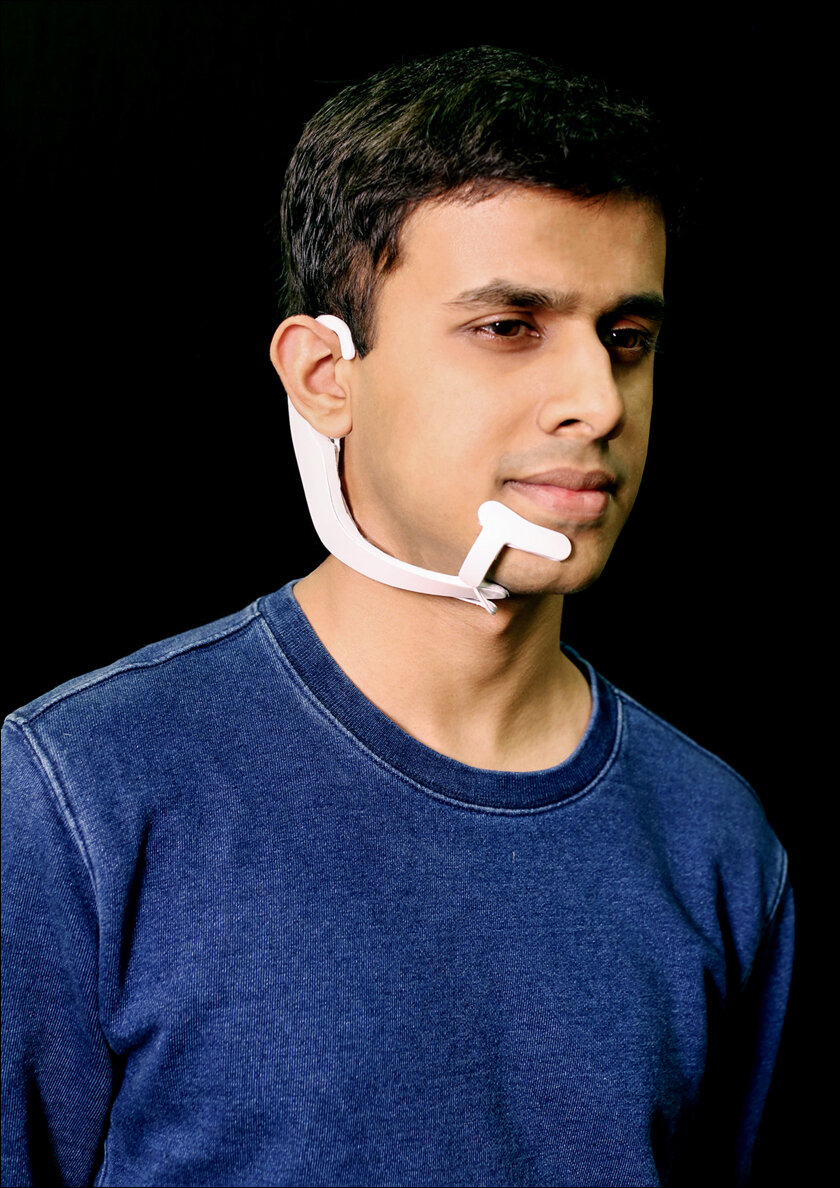“All you have to do is internally articulate words as if you were silently reading and the device, wearable like a headset, picks up signals from your brain and converts them back to natural language”.
The definition of telepathy is to be able to communicate with someone using only your mind. While we haven’t achieved that yet and are still restricted to either the written or spoken word or in some cases sign language, we can now communicate telepathically with computers.
Designed by an Indian MIT student Arnav Kapur, the AlterEgo enables users to communicate with machines, AI assistants, online apps and services, and even other people using only their “mind’s voice.” That’s right, all you have to do is internally articulate words as if you were silently reading and the device which is non-invasive and wearable like a headset, picks up those signals from your brain and converts them back to natural language.

The Entire Internet in Your Head
In a video that has since gone viral, an interviewer is seen asking Arnav Kapur a number of complex mathematical equations as well as general knowledge questions like the capital and populations of certain countries. Arnav, with the AlterEgo device strapped to his head, answers all questions correctly without making any visible communication or hand gestures.
Additionally, the AlterEgo is also connected to a computer screen so you can see the words being exchanged between Arnav’s mind and the device. At the end of the video, the interviewer, somewhat impressed by the accuracy of the machine, exclaims that Arnav has the entire internet in his head, to which Arnav replies “That’s the idea.”
Now while many may argue that silently communicating with a computer is not the same as having the entire internet in your head, it is pretty close if you think about it. Hypothetically, if we had a hard drive in our heads we would still have to access it with mental commands which is exactly what this machine does except you can access the entire internet.
That’s like having a cloud for your brain, one that you have to connect to by wearing a non-invasive, wearable, peripheral neural interface called the AlterEgo. What’s even more interesting is that when the device communicates back to you, you hear it like audio but it’s actually bone conduction so no one else can hear it no matter how close they are.

AlterEgo
Aimed at helping people with speech disorders like multiple sclerosis, and amyotrophic lateral sclerosis (ALS), AlterEgo holds a lot of promise for people with a number of conditions. People who are paralyzed and unable to speak often retain the ability to internally vocalize words and AlterEgo can give those words a voice. Stephen Hawking, one of the greatest theoretical physicists and intellectual minds to ever live, suffered from ALS and had to use a clicker to select words from a list of phrases generated by a computer, and could only type about a word a minute. In spite of that, his achievements, discoveries, theories, and books have had a major impact on the way we understand the universe today. Can you imagine if that man had an AlterEgo that could listen to his internal voice and tell us exactly what he wanted to say?

This form of discrete communication between humans and computers is just a start, and AlterEgo’s goal is to create a sort of “second shelf” of cognitive functions that can be accessed when we wear the device. It’s also being called a discrete gateway to digital information since it effectively removes the need to look at a screen and type or to voice a command out loud in front of other people.
This gateway includes everything from cloud computing to the internet, AI, and more. Imagine if stock brokers got their hands on this and instead of standing around the stock exchange and yelling at the top of their voices, they all started wearing AlterEgo’s and silently communicating with their AI assistants. Scary thought but not necessarily a bad thing.

Discrete Distraction
How many of you have been talking to a friend, a loved one, or even just an acquaintance, only to realize they were engrossed in something else on their phone and didn’t hear a word of what you said? While this device does sound pretty awesome in some ways, it could be a killer as far as social communication goes. It’s difficult as it is nowadays to get people to look up from their screens, but having them plugged into an infinite source of information, 24/7 might just take things to another level.

As is the case with most inventions and discoveries, there’s always an upside and a downside. The downside here could be anything from your thoughts and privacy being invaded to you not realizing someone is ignoring you and silently googling Catnip recipes.
In case you missed:
- Could Contact Lenses be the Key to Fully Wearable BCIs?
- AI-powered smart devices for the hearing, vision, and speech-impaired
- Could the Future of Communication Be Holographic?
- X’s Trend Genius: Social Media Psychic or Just Another Algorithm?
- These AI powered devices add smells to virtual worlds
- Scientists establish two-way Lucid Dream communication!
- Mainstream AI workloads too resource-hungry? Try Hala Point, Intel’s largest Neuromorphic computer
- This computer uses human brain cells and runs on Dopamine!
- Omnidirectional VR treadmills, go anywhere without going anywhere!
- CES 2025: NVIDIA’s Cosmos Just Gave Robots a ‘ChatGPT Moment’!









